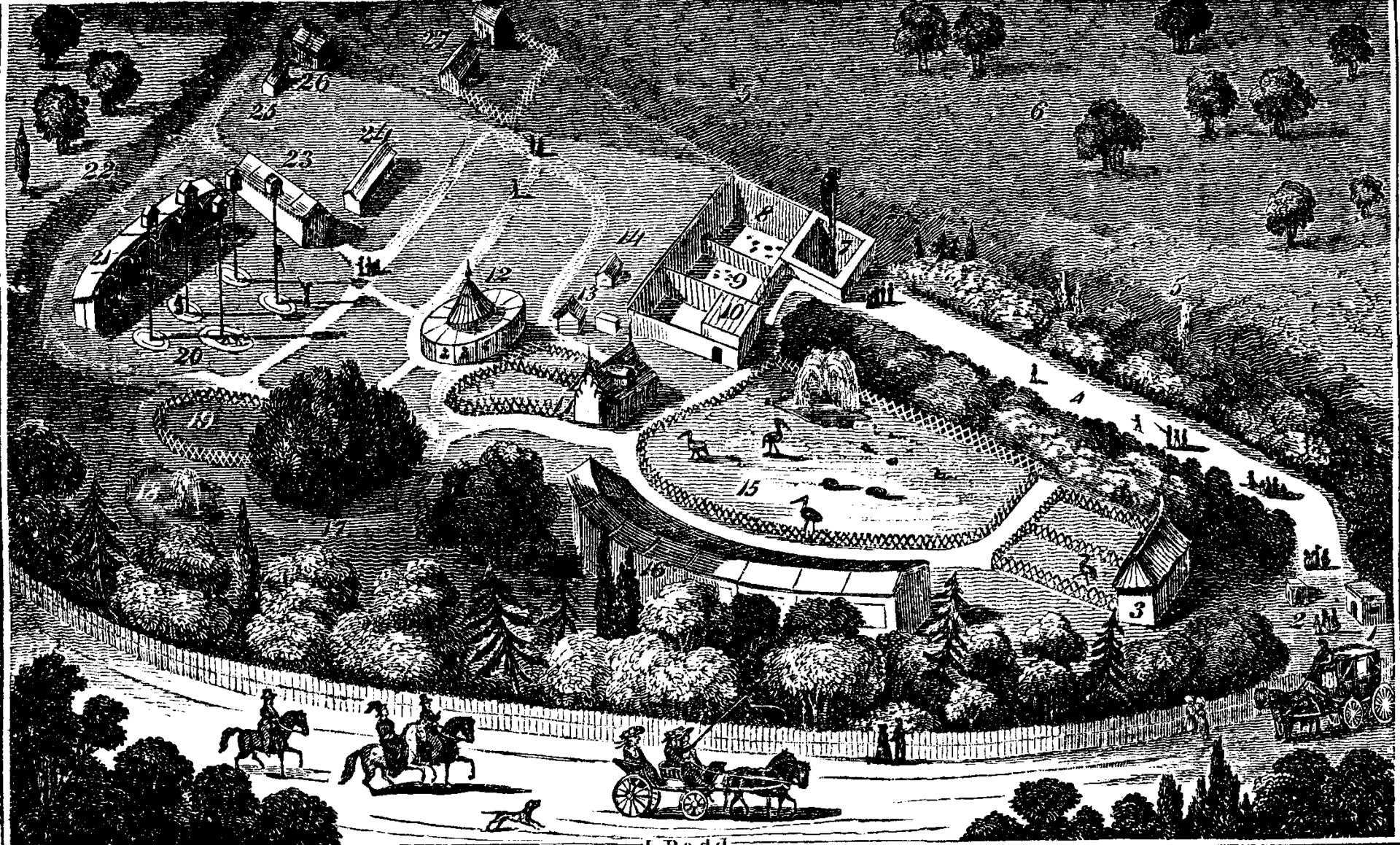Museum/The London Zoo
Located at the Northern End of Regent's Park, at the boundary of Camden and Westminster, lies the London Zoo. Established on April 27, 1828, the zoo was originally only accessible to members of the Zoological Society. Sir Stamford Raffles and Sir Humphry Davys are responsible for the birth of this landmark after obtaining the land shortly before Raffles' death in 1826. Davys' managed to push forward in their plans, honoring his colleague's legacy, and oversaw the creation of the zoo. King Charles IV ended up granting a charter to the project, leading to its newfound accessibilty to the public. The London Zoo boasts many accomplishments, the first of which being that this place is actually the world's oldest scientific zoo. At this time, it was considered tradition to take the out-of-town visitors here,making it the perfect place for a regal and esteemed man such as Steerforth to take David Copperfield to see. In the interactions between David and Steerforth in chapter 20, it is incredibly apparent how star struck David feels around such an established man such as Steerforth. One can only imagine how elated Copperfield must have been to be invited to talk a walk to "see the lions." Although Steerforth is quite the impressive figure, it can be inferred that he feeds into David's fantasy a bit, thoroughly enjoying the praise and reveer he is receiving. It was no mistake that he took David to this museum, What better way to impress a guest than with, not only LIONS, but the same lions that were once held at the Tower of London? Between the lions and his vast knowledge of "an infiinite variety of subjects," Steerforth's ego was fully fed on the day of this visit. Although the zoo was no where near completion at the time of David and Steerforth's visit, it was still a fantastic stop for them to make on the way to Steerforth's mother's home. Going beyond their visit, the London Zoo became home to not only the world's very first reptile house, but also the first aquarium as well! The list does not end there; the zoo was also home to the first insect house and children's zoo also. Unfortunately, the Museum/Zoo did not fare too well during the World War and a great number of their fish, the edible ones at least, found themselves in a tank to table transition, feeding many London residents. This was not the only hardship the zoo faced. "Although this vast collection was part of the zoo's appeal, it may also have been one of the main causes of its financial problems. This contributed to the zoo being faced with closure in the 1980s. Due to the public change of attitude to animals kept in captivity and unsuitably cramped space, the zoo also suffered dwindling visitor numbers. However, when it was announced that London Zoo would close in 1991, a swell of public support in visitors and donations allowed the zoo to continue its work, attempt to balance its books, and take on the huge task of restoring its buildings and creating environments more suitable for animal behaviour in the late 20th century. However, in 1955, reconstruction began and over the years, the zoo became an incredibly impressive sight. It was home to numerous impressive and endangered animals, even the famous giant Panda "Chi Chi" called this zoo home at one point. Britannica lists several of the accomplishments and residents of the zoo in the following link, it is certainly worth taking a look at! ( https://www.britannica.com/place/London-Zoo ) Although the interaction with this Museum/zoo was brief in chapter 20, it certainly adds to the character profile development of both David and Steerforth, which I intend to look more in to in my next discussion post.
Sources:


Parent Map
Coordinates
Longitude: -0.153430300000
